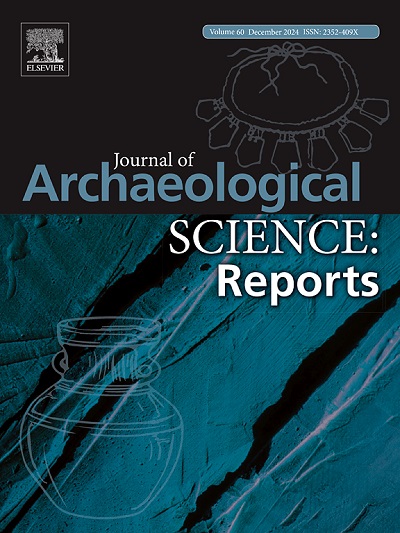Archaeobotanical analysis of fuel and forest management from a Roman pottery workshop in southern France (Mas des Tourelles, Beaucaire)
IF 1.5
2区 历史学
0 ARCHAEOLOGY
引用次数: 0
Abstract
Roman-era pottery workshops have been central to numerous research inquiries for several decades. The increasing exploration of rural contexts in Narbonensis Gaul in recent years has progressively led to the implementation of archaeobotanical studies, especially anthracological analyses. However, until now, fruit and seed studies have largely been neglected in this type of context. A new excavation project began in 2019 at the site of Mas des Tourelles (Beaucaire, France), a pottery workshop associated with a wine-producing villa dating from the Late Republican period to the Late Roman Empire, and allowed the combination of these two approaches. In this study, 55 samples were analyzed for carpological remains and 11 samples for charcoal remains. On the one hand, archaeobotanical data indicate the use of small-caliber wood and faggots as fuel, demonstrating the management of a Mediterranean mixed oak forest and the predominant exploitation of holm oak/kermes oak, rockrose, and heather. On the other hand, the question arises whether non-woody fuels, undetectable through charcoal analysis, were also used for firing the kilns: although the carpological results did not reveal the presence of non-woody fuel, seed analysis provided further information to the anthracological results by identifying additional woody taxa.
法国南部罗马陶器作坊的燃料和森林管理考古植物学分析(Mas des Tourelles, beauaire)
几十年来,罗马时代的陶器作坊一直是众多研究调查的中心。近年来,对高卢纳邦人农村环境的探索越来越多,这逐渐导致了考古植物学研究的实施,特别是人类学分析。然而,到目前为止,水果和种子的研究在很大程度上被忽视了。2019年,一项新的挖掘项目开始于法国布aire的Mas des Tourelles遗址,这是一个与酿酒别墅相关的陶器作坊,其历史可以追溯到共和晚期到罗马帝国晚期,并允许这两种方法的结合。在本研究中,分析了55个样品的岩石残留物和11个样品的木炭残留物。一方面,考古植物资料表明,使用小口径木材和柴捆作为燃料,证明了地中海混合栎林的管理,以及主要开采的黑栎/赤栎、岩玫瑰和石南。另一方面,出现的问题是,通过木炭分析无法检测到的非木质燃料是否也用于烧制窑炉:尽管人类学结果没有揭示非木质燃料的存在,但种子分析通过识别额外的木质分类群,为人类学结果提供了进一步的信息。
本文章由计算机程序翻译,如有差异,请以英文原文为准。
求助全文
约1分钟内获得全文
求助全文
来源期刊

Journal of Archaeological Science-Reports
ARCHAEOLOGY-
CiteScore
3.10
自引率
12.50%
发文量
405
期刊介绍:
Journal of Archaeological Science: Reports is aimed at archaeologists and scientists engaged with the application of scientific techniques and methodologies to all areas of archaeology. The journal focuses on the results of the application of scientific methods to archaeological problems and debates. It will provide a forum for reviews and scientific debate of issues in scientific archaeology and their impact in the wider subject. Journal of Archaeological Science: Reports will publish papers of excellent archaeological science, with regional or wider interest. This will include case studies, reviews and short papers where an established scientific technique sheds light on archaeological questions and debates.
 求助内容:
求助内容: 应助结果提醒方式:
应助结果提醒方式:


